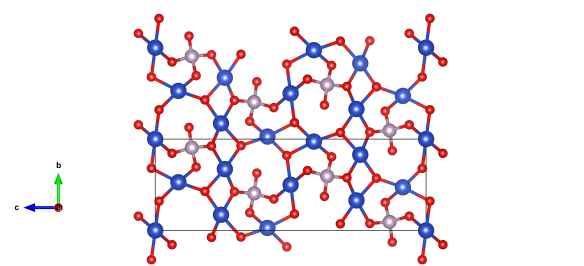A mineral imposter – pseudomalachite
What does it look like?

The structure of psuedomalachite. The blue atoms are copper, red oxygen. In contrast to malachite, there's no carbon in this structure – instead phosphorus (lilac). Image generated by the VESTA (Visualisation for Electronic and STructural analysis) software http://jp-minerals.org/vesta/en/
What is it?
Side by side, it's hard to tell apart Malachite and its rarer 'imposter' mineral pseudomalachite – both are green, form a crystal that looks a bit waxy and grow in a rounded (or botryoidal) form. But diffract with an X-ray beam and the differences really reveal themselves.
Rather than a copper carbonate hydroxide, pseudomalachite is a copper phosphate hydroxide. And it isn't that the phosphate atoms take the place of the carbon atoms – it's a whole different crystal structure. Rather than forming the sheets of copper, oxygen and carbon atoms that malachite does, pseudomalachite forms more of a framework structure. As a result, it is a harder mineral.
The way to tell them apart in the field is to drip a couple of drops of warm hydrochloric acid onto each rock – malachite will react, but psuedomalachite won't.
Where did the structure come from?
The crystal structure of pseudomalachite was found by Shoemaker et al., and the crystallographic information file for it can be downloaded from the American Mineralogist Crystal Structure Database.






